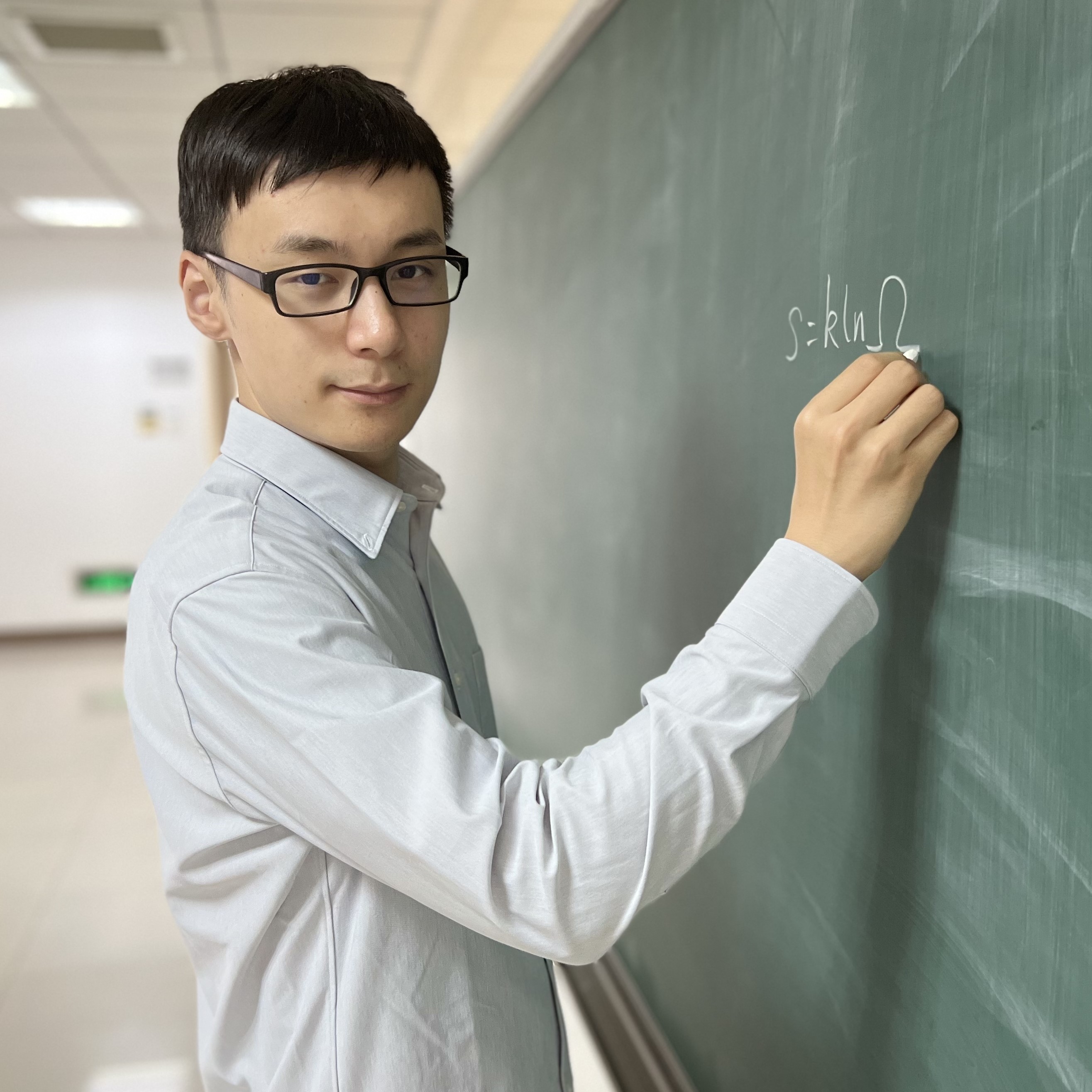About me
I am currently working as a Tenure Track Assistant Professor at Science Mathematics and Technology Cluster of Singapore University of Technology and Design.
Previously I was a Research Fellow at Centre for Quantum Technologies, National University of Singapore, collaborating with Prof. Patrick Rebentrost.
I got my PhD degree in July 2022 from Institute of Theoretical Physics, Chinese Academy of Sciences, supervised by Prof. Pan Zhang. My research interests lie at the interdisciplinary field among Statistical Physics, Quantum Computing and Tensor Network algorithms.
Here you can find my CV and Google Scholar Profile.
Research Highlights
Classical simulation of Sycamore quantum supremacy circuits.
After Google’s random quantum circuit (RQC) sampling experiment in 2019, debates about how many time a classical device need to reproduce Goggle’s computational task have never stopped. In this PRL editors’ suggestion paper, we use big-head method which is based on tensor network to classically generate over one million correlated bitstrings with exact amplitudes to spoof linear cross-entropy benchmark (XEB). The XEB fidelity of this sample is 73.9% which is much higher than Goggle’s (0.2%). The running time of this simulation is around 5 days in a 60 NVIDIA V100 graphical processing units (GPUs). In this recent PRL editors’ suggestion paper, we use another tensor network based algorithm, sparse-state contraction, and low-rank detecting methods to classically reproduce exactly the same task as Goggle did in a computational cluster with 512 NVIDIA V100 GPUs in 15 hours. This simulation sampled over one million uncorrelated bitstrings with estimated fidelity 0.37%. We also estimate that if this simulation can be implemented in a high-end supercomputer with performance of exaFLOPS, the simulation time can be reduced to several seconds, which is smaller than the quantum simulation time.
Approximate/exact contraction method for arbitrary tensor networks.
Most applications of tensor networks into physical problems deal with lattice systems with organized connections. But what if the physical systems we care about are ones with arbitrary topologies? In this PRL paper, we investigate the solution by introducing Matrix Product State (MPS) calculus algorithm. This algorithm splits every tensor in TN into MPS, and contract them by a DMRG-like scheme, which keeps MPS form of the resulting tensor after each contraction. By adjusting the bond dimension of physical and virtual bonds, this algorithm can flexibly trade accuracy for contraction complexity. We use this algorithm into spin-glass models and quantum circuit simulations, which gives exciting results.
Machine learning assisted method for solving problems of statistical mechanics.
Machine learning algorithms have been made a powerful toolbox for physical research. In this PRE paper, we use Varational Autoregressive models (VANs) combining the feedback vertex set (FVS) to deal with problems of statistical mechanics in spin-glass and combinatorial optimization. VANs are belong to generative models in ML and they hold a exact expression of the joint probability distribution over all variables, which is exactly physical problems need. The results are better than ones given by traditional variational and mean-field methods by a large margin.
